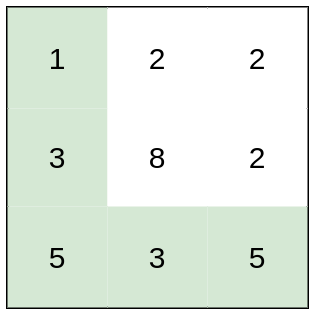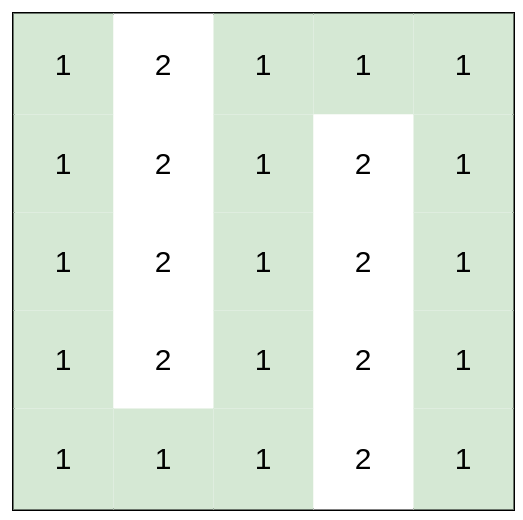Class Solution
java.lang.Object
g1601_1700.s1631_path_with_minimum_effort.Solution
1631 - Path With Minimum Effort\.
Medium
You are a hiker preparing for an upcoming hike. You are given `heights`, a 2D array of size `rows x columns`, where `heights[row][col]` represents the height of cell `(row, col)`. You are situated in the top-left cell, `(0, 0)`, and you hope to travel to the bottom-right cell, `(rows-1, columns-1)` (i.e., **0-indexed** ). You can move **up** , **down** , **left** , or **right** , and you wish to find a route that requires the minimum **effort**.
A route's **effort** is the **maximum absolute difference** in heights between two consecutive cells of the route.
Return _the minimum **effort** required to travel from the top-left cell to the bottom-right cell._
**Example 1:**

**Input:** heights = \[\[1,2,2],[3,8,2],[5,3,5]]
**Output:** 2
**Explanation:** The route of [1,3,5,3,5] has a maximum absolute difference of 2 in consecutive cells. This is better than the route of [1,2,2,2,5], where the maximum absolute difference is 3.
**Example 2:**

**Input:** heights = \[\[1,2,3],[3,8,4],[5,3,5]]
**Output:** 1
**Explanation:** The route of [1,2,3,4,5] has a maximum absolute difference of 1 in consecutive cells, which is better than route [1,3,5,3,5].
**Example 3:**

**Input:** heights = \[\[1,2,1,1,1],[1,2,1,2,1],[1,2,1,2,1],[1,2,1,2,1],[1,1,1,2,1]]
**Output:** 0
**Explanation:** This route does not require any effort.
**Constraints:**
* `rows == heights.length`
* `columns == heights[i].length`
* `1 <= rows, columns <= 100`
*
1 <= heights[i][j] <= 106-
Constructor Summary
Constructors -
Method Summary
-
Constructor Details
-
Solution
public Solution()
-
-
Method Details
-
minimumEffortPath
public int minimumEffortPath(int[][] heights)
-